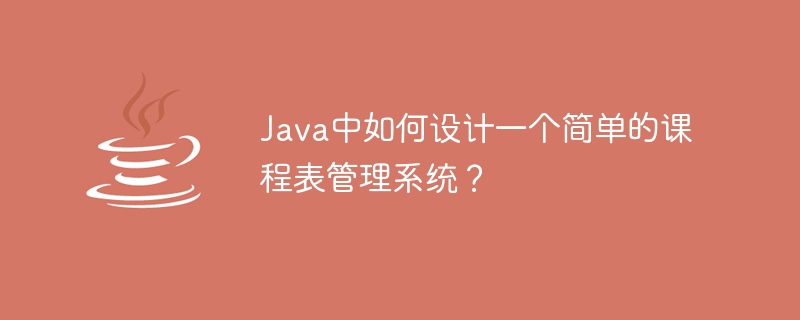

How to design a simple curriculum management system in Java?
With the development of education and the diversification of courses, schools and educational institutions need an efficient course management system to handle daily course arrangements and adjustments. As a widely used programming language, Java provides us with a wealth of tools and libraries to design and develop a simple and practical course schedule management system.
Before designing a curriculum management system, we need to clarify the functional requirements of the system. Generally speaking, a curriculum management system needs to implement the following functions:
Based on the above requirements, we can start to design the data structure and functional modules of the curriculum management system.
In Java, we can use a class to represent a course object, which contains the following attributes:
In the design of the course schedule management system, we can use a list or array to store all course objects. Through operations on lists or arrays, courses can be added, deleted, modified, and queried.
(1) Add a course
Users enter course information, including course name, teacher name, class time and classroom location, etc. , then click the Add button. The system will create a new course object based on the entered information and add it to the course list.
(2) Delete course
Users can delete courses by selecting the course to be deleted and clicking the delete button. The system will remove the user from the course list based on the course number they selected.
(3) Modify courses
Users can select the courses to be modified and modify them by entering new course information. The system will find the corresponding course object based on the course number selected by the user and update its properties.
(4) Query courses
Users can query courses by selecting different query conditions, such as course name, teacher name or class time. The system will filter the course list based on the query criteria selected by the user and display matching courses to the user.
The above is the design idea of a simple curriculum management system. By using Java language and related development tools, we can implement a fully functional curriculum management system to provide efficient curriculum management services for schools and educational institutions.
The above is the detailed content of How to design a simple curriculum management system in Java?. For more information, please follow other related articles on the PHP Chinese website!




